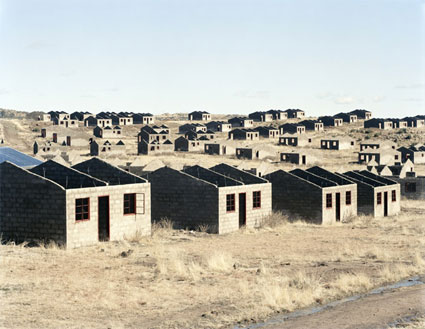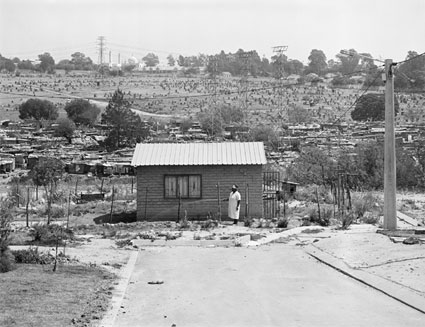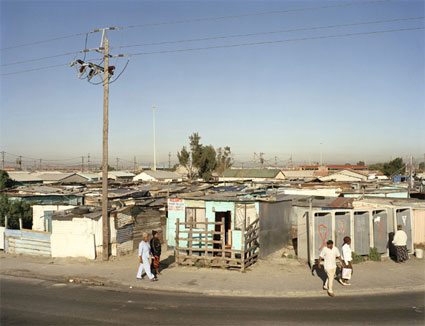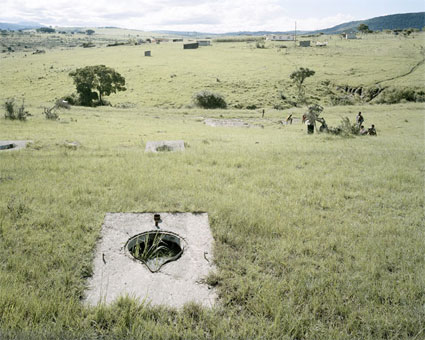Haunch of Venison London is running until July 5 Home Lands, Land Marks, an exhibition presenting works from seven contemporary artists from South Africa. Although i have less opportunity to see (and thus report on) shows of contemporary art from South Africa, what i’ve discovered of their practice over the past couple of years makes me think that we need to see more of their works. Here’s a few reasons to explain why: Anton Kannemeyer – The Alphabet of Democracy, Control of Arrivals, In South African prisons.
 David Goldblatt, Incomplete houses, part of a stalled municipal development of 1000 houses. Lady Grey, Eastern Cape, 5 August 2006
David Goldblatt, Incomplete houses, part of a stalled municipal development of 1000 houses. Lady Grey, Eastern Cape, 5 August 2006
The Haunch of Venison show didn’t disappoint at all. Differing from the usual approach to post-apartheid South Africa, the exhibition addresses the complexity of the South African landscape, reflecting upon notions of memory, place and identity, referring to the political context and historical background of South Africa only through the imprint and trace of human experience on the physical landscape.
I couldn’t resist focusing on the photographies of David Goldblatt who has spent the past five decades documenting everyday life in South Africa, from scenes of Apartheid to the advances of AIDS in the country (around one in seven of its citizens is infected with HIV), from scandalous housing development projects to memorial isolated by the side of the road.
 David Goldblatt, Miriam Mazibuko watering the garden of her new RDP (Reconstruction and Development Programme) house, Extension 8, Far East Alexandra Township. It has one room. For lack of space, her four children live with her parents-in-law. Johannesburg. 12 September 2006
David Goldblatt, Miriam Mazibuko watering the garden of her new RDP (Reconstruction and Development Programme) house, Extension 8, Far East Alexandra Township. It has one room. For lack of space, her four children live with her parents-in-law. Johannesburg. 12 September 2006
 David Goldblatt, Lavatories on Lansdowne Road, Khayelitsha, Cape Town, in the time of AIDS. 16 May 2007
David Goldblatt, Lavatories on Lansdowne Road, Khayelitsha, Cape Town, in the time of AIDS. 16 May 2007
 David Goldblatt, Remains of long-drop lavatories at Frankfort in the former Ciskei bantustan. The people of Mgwali strongly resisted their removal to this resettlement camp and the government eventually allowed them to remain on their farms at Mgwali. The lavatories at Frankfort have been stripped of usable materials by the local populace and all that now remains of the scheme are some 1 500 anatomically shaped holes in the veld. Frankfort, Eastern Cape. 22 February 2006
David Goldblatt, Remains of long-drop lavatories at Frankfort in the former Ciskei bantustan. The people of Mgwali strongly resisted their removal to this resettlement camp and the government eventually allowed them to remain on their farms at Mgwali. The lavatories at Frankfort have been stripped of usable materials by the local populace and all that now remains of the scheme are some 1 500 anatomically shaped holes in the veld. Frankfort, Eastern Cape. 22 February 2006
The gallery website has plenty of pictures and that never prevents me from making my usual lame pics.
